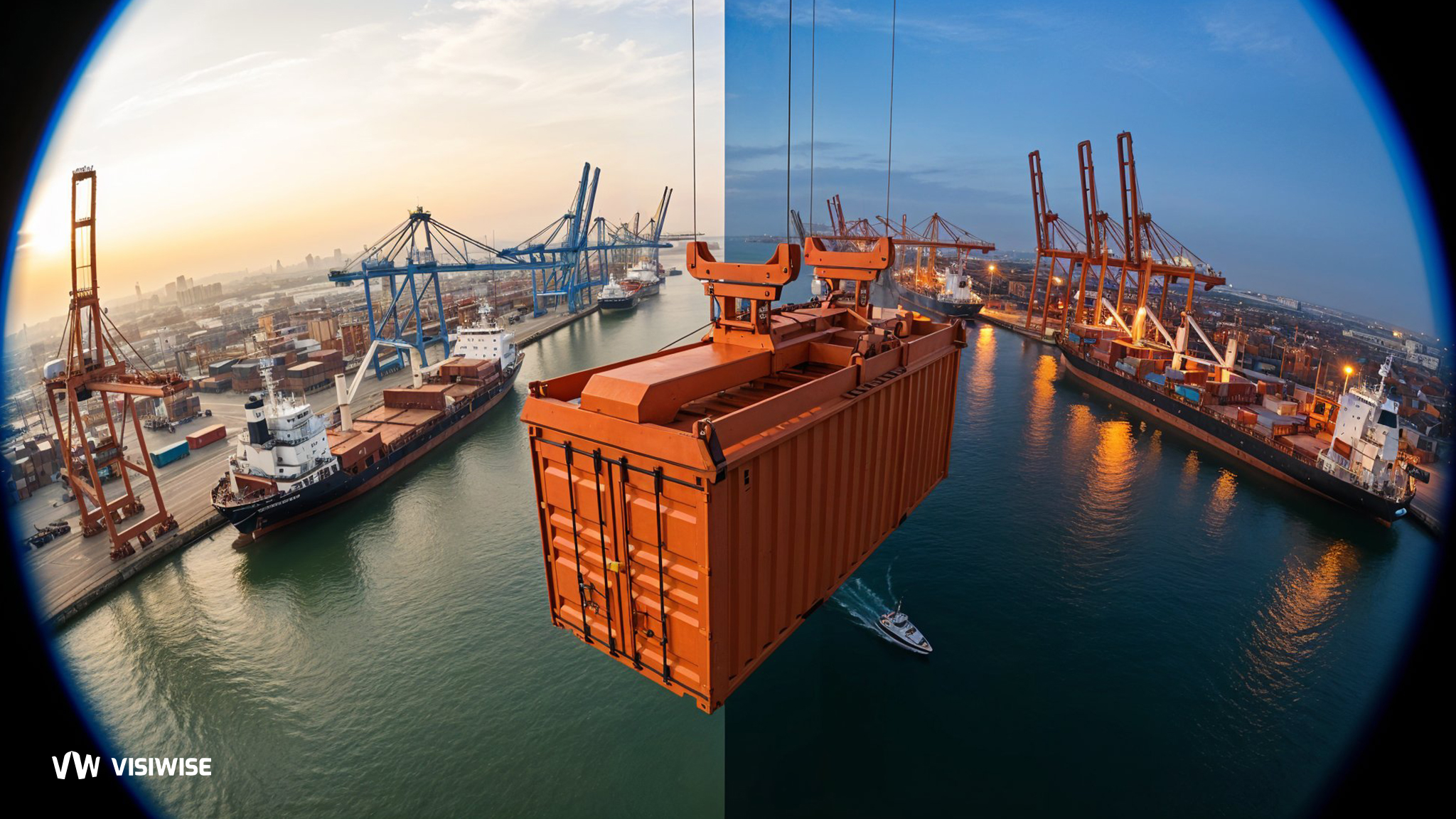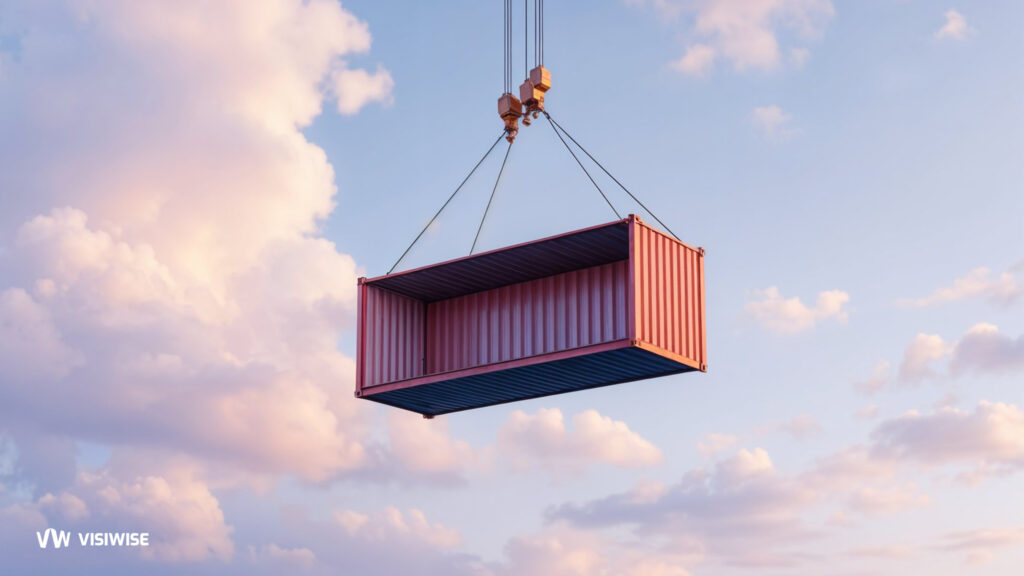Transshipments are the key to understanding global logistics. When it comes to international commerce, few operations are as relevant to the overall structure of trade and consequential to the eventual arrival of cargo. However, despite their importance, few has been written about how they impact the structure of supply chains and why they are relevant to companies even if they aren’t currently considering them.
This article is meant to provide an initial guide to transshipments: what they are and how they operate. In it, we cover how they are directly tied to disruptions in global commerce
What Is Transshipment?
Simply put, it is an operation where cargo is moved from one vehicle to another. This is most common in ocean trade, where a single vessel makes a great number of stops before reaching its end destination.
How Transshipments Work
These stops don’t necessarily imply that the full cargo of a vessel is emptied at a port to be moved to another vessel. In fact, it is often just a fraction of cargo that is removed from the vessel to either be picked up at port, or moved to a different form of transportation—be it another container ship, a train or a truck. At the same time, a vessel might receive additional cargo at that same port, replenishing the cargo that was removed.
Main Purpose of Transshipment
For companies shipping goods, a transshipment often happens when there is no direct connection between two ports. In such cases, a company might have to send their cargo through two or more shipping lines, making transshipments whenever necessary.
Why Transshipments Are Common in Ocean Shipping
This, in essence, is what makes ocean shipping so complex. Vessels are constantly loading and offloading cargo at different ports. Some variables that might seem negligible like the location of a shipping container in a boat, can actually result in great impacts when it comes to offloading cargo. Containers closest to the top can be removed more easily and should prioritize cargo for neighboring ports, while those at the bottom, will require the movement of dozens of additional containers.
Transshipment Complexities and Delays
Yet what’s most important is not that transshipments themselves are complex. Rather, their true relevance comes from the effects of their complexities. Since transshipment operations can take large amounts of time, they can also result in delays at a given port.
How Delays Cascade Across Supply Chains
These delays, in turn, increase the wait time for other vessels trying to enter the port in question, creating great congestions in the world of ocean shipping. If, on top of that, we add external disruptions such as weather events, malfunctions in technology, or geopolitical conflict (from protests to tariffs), transshipment ports soon become a problem for all ports that follow in a route.
The Main Transshipment Challenges
The main transshipment challenges in a summary are:
- Port congestion
- Weather and natural disasters
- Financial challenges
- Compliance
The Global Scale of the Challenge
Currently, the UN estimates there are some 939 container ports in the world. However, direct routes between ports are extremely rare. If there were direct routes between all ports in the world, that would result in 440,391 routes. Yet current estimates suggest there are only 12,748 direct routes between ports—or 2.9% of what is possible.
That means that, by and large, the bulk of global commerce happens through transshipment ports. In the worst cases, a vessel might need up to six transshipments and 14 port stops to reach its end destination.
Why Ships Need to Make Stops
So, in simple terms, ships need to make stops. Sometimes, it is by design, to allow them to carry new cargo and transship other containers. In other instances, it could be a technical stop to refuel or change crews.
The Ripple Effect of Port Delays
Regardless, stops will happen in over 97% of routes and, when they do, the wait times in any port are likely to impact the overall shipping time for a product. It’s really a waterfall effect, where delays in one stop along a route will have an impact further down the line.
Global Transshipment Ports and Connectivity
We’ve written quite extensively about port congestion and how it impacts shipping. Now, we want to turn our attention to another useful metric: the availability of transshipment options.
The Port Liner Shipping Connectivity Index (PLSCI)
More specifically, determining which are the best ports for transshipments based on the number of efficient routes they hold. For logistics operators, this could help them plan ahead of their routes to ensure they are taking the optimal path before considering congestion.
When discussing estimates like these, the UN has a useful index called the Port Liner Shipping Connectivity Index (PLSCI). This index looks at all container ports in the world and assesses them based on a number of key factors, from the number of containers it handles, the total number of boat calls at port, and, crucially, the number of connections it has to other ports.
Regions with the Highest Port Connectivity
According to the PLSCI, connectivity seems to peak in East Asia and Europe, suggesting ports in both regions have the most number of connections to other ports in the world.
High-Connectivity Regions
There are similarly high scores in the Persian Gulf, and the U.S. East Coast. This generally aligns with our past research on choke points to global trade, many of which also concentrated in East Asia and Europe.
This suggests an inherent trade off. Ports with more connectivity will have more traffic and, likely, be subject to more disruptions. But, at the same time, they will offer more alternatives to reach a desired port. Logistics operators would bear this in mind as they plan their ideal routes.
Top 10 Busiest Container Transshipment Hubs in the World (2024–2025)
| Rank | Port (2024 name) | Country / Region | 2024 Throughput (TEUs, in millions) |
| 1 | Port of Shanghai | China | 51.506 |
| 2 | Port of Singapore | Singapore | 41.124 |
| 3 | Port of Ningbo–Zhoushan | China | 39.308 |
| 4 | Port of Shenzhen | China | 33.380 |
| 5 | Port of Qingdao | China | 30.870 |
| 6 | Port of Guangzhou (Nansha) | China | 26.070 |
| 7 | Port of Busan | South Korea | 24.402 |
| 8 | Port of Tianjin | China | 23.290 |
| 9 | Jebel Ali (Dubai) | United Arab Emirates | 15.536 |
| 10 | Port Klang | Malaysia | 14.645 |
Final Words
Transshipments are at the heart of global trade. While stops, cargo transfers, and delays can complicate shipping, they are essential because direct routes are rare. High-connectivity ports help keep goods moving efficiently, and understanding these hubs is key for smoother, more reliable supply chains.



